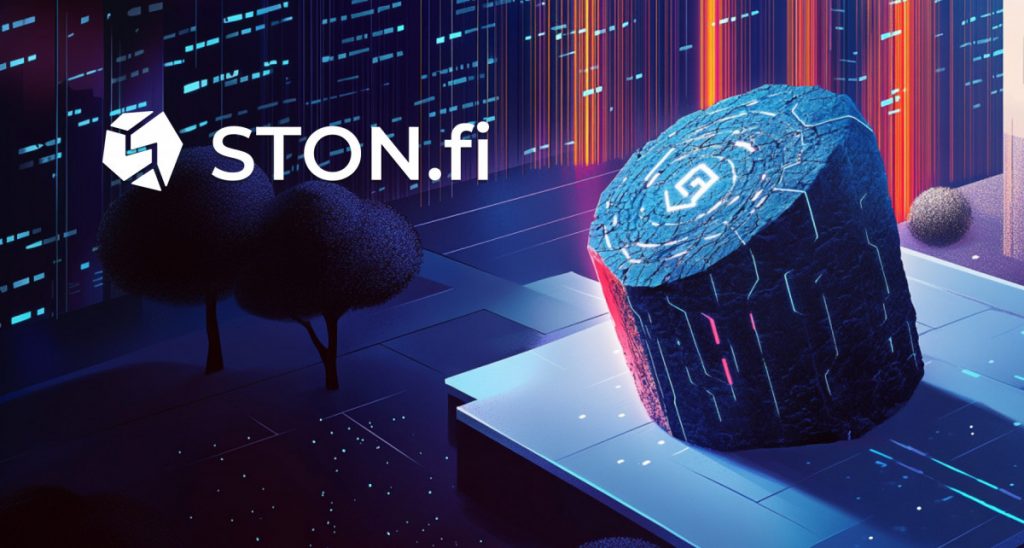Addressing the Challenge of DeFi Fragmentation: Omniston's Role in Enhancing Liquidity within the TON
In Brief
STON.fi has launched the Omniston decentralized liquidity aggregation protocol, crafted specifically to confront the market fragmentation problems in the growing TON ecosystem.

The creator behind the automated market maker (AMM) protocol, STON.fi has introduced Omniston, the pioneering decentralized liquidity aggregation protocol meticulously designed for the infrastructure of the The Open Network TON blockchain. Now operational within the STON.fi decentralized application (dApp), Omniston aims to resolve issues stemming from market fragmentation as the TON ecosystem expands.
Omniston is set to tackle a number of challenges faced in the DeFi space, where liquidity providers and market makers struggle with ineffective capital distribution and restricted access to broader audiences. Developers working in DeFi also encounter hurdles associated with redundant technical setups across multiple decentralized exchanges (DEXs), increasing costs and complexity. Users often deal with less-than-favorable swapping rates and limited trading experiences due to fragmented liquidity.
Omniston brings forth a variety of innovative solutions aimed at simplifying liquidity management, enhancing swapping efficiency, and widening market access throughout the TON ecosystem. With Omniston’s broad distribution network, liquidity providers and market makers can easily tap into the market and connect with users across major TON applications. The protocol's scalable backend is designed to accommodate potential growth, catering to as many as 1 billion users within the Telegram ecosystem, which allows market participants to focus on executing their trading strategies without worries over infrastructure constraints.
For DeFi developers, Omniston eliminates the necessity to juggle multiple technical integrations across various DEXs or source liquidity independently from many providers. This enables developers to devote their attention to enhancing the core components of their projects while Omniston handles liquidity concerns. Moreover, through its integration with STON.fi , users can experience optimized token swaps, access a robust liquidity pool, and enjoy quicker transaction completions, guaranteeing dependable and cost-effective trades with minimal slippage and enhanced price stability.
Omniston is revolutionizing liquidity infrastructure within the TON by breaking down the walls between liquidity providers and applications. With a single integration, liquidity providers gain entry to an expanding array of DeFi protocols, simplifying both the integration journey and operational tasks. Early adopters of Omniston have reported a staggering reduction in maintenance costs by up to 70% and a dramatic decrease in onboarding times, slashing them from over a month to just a few days.
Right now, Omniston is bringing together liquidity from the largest DeFi protocols on TON. As more liquidity protocols are incorporated shortly, developers of DeFi applications will automatically gain access to an augmented liquidity pool, providing users with improved trading opportunities without additional technical efforts or investments required from them.
Come the second quarter of 2025, Omniston is set to roll out support for proprietary liquidity sourced from OTC market makers. Furthermore, cross-chain swaps are on the horizon, linking TON's liquidity with other major blockchain ecosystems, thus expanding the available prospects for participants in the DeFi domain.
Decoding How Omniston Works
All transactions within the platform are conducted in a trustless manner, utilizing smart routing and decentralized trading mechanisms to ensure both security and efficiency during execution. As long as all participants follow the protocol's guidelines, the transaction unfolds seamlessly. However, should any party diverge from the agreed protocols, the transaction will be aborted automatically, with funds returned to their original owners.
In the procedure, a user initiates a swap through an application, which then relays the request to Omniston. Omniston formulates a request-for-quote (RFQ) and sends it out to the connected resolvers. The resolvers provide their quotes back to Omniston, which selects the most advantageous option. After determining the quote, the transaction proceeds, with both parties receiving their designated tokens.
Glimpsing Omniston’s Roadmap: Future Developments for the Protocol
Currently, Omniston is placing a higher priority on accessibility and user engagement rather than immediate revenue generation. As noted by Andrey Fedorov, the Chief Marketing Officer and acting Chief Business Development Officer, the aim is to motivate developers and liquidity providers to begin utilizing the platform without upfront financial barriers. Presently, the protocol does not implement any fees, focusing instead on encouraging participation and building a network of integrated applications. This strategy enables liquidity providers to start earning through their involvement while developers can introduce their own monetization approaches on top of the protocol.
Regarding future revenue models, Andrey Fedorov points out that while revenue strategies are anticipated to develop over time, they may not align with traditional pay-per-use models. Given that Omniston is just entering the market, the primary focus of the team remains on broadening participation through the onboarding of more applications and liquidity providers. Monetization strategies will be assessed subsequent to achieving greater integration, though this doesn’t imply that users will necessarily incur fees in the future.
In terms of development trajectories, the implementation of cross-chain swap capabilities marks a significant milestone. While Omniston currently operates on the TON blockchain, the foundational architecture is built with cross-chain functionality in mind and is actively undergoing testing. The expansion will take place gradually, beginning with Tron as the first additional network, followed by progress into Ethereum Virtual Machine (EVM)-compatible blockchains. This phased rollout will ensure that each integration is thoroughly vetted before broadening its reach.
Disclaimer
In line with the Trust Project guidelines , please keep in mind that the information shared on this page aims to inform but should not be taken as legal, tax, investment, financial, or similar advice. Always invest only what you’re prepared to lose and seek independent financial counsel if uncertain. For additional details, we recommend referring to the terms and conditions as well as support resources provided by the issuer or advertiser. MetaversePost strives for accurate and objective reporting, yet market conditions can shift without warning.







